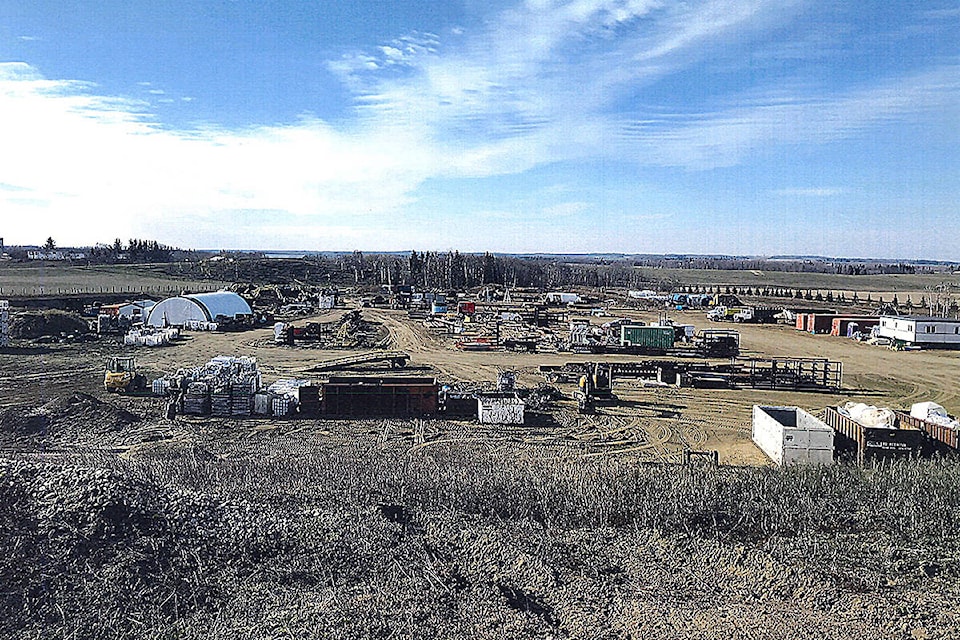Draft conditions for a direct control development permit will be back in front of Ponoka County council next month.
Council, except Coun. Doug Weir who was absent, wanted a lot more detail after hearing the presentation on the progress of the permit for ProMetal Recycling at its meeting on Feb. 11.
Elizabeth Armitage, a planning consultant acting as the development officer on this application, outlined to council the nearly 30 conditions that have been proposed.
“However, we are not looking for council’s approval of this today as we have not yet received comments back on this from Alberta Transportation,” she said.
Armitage added revisions will be done based on council’s comments as well as from further information the applicants — Brian and Shauna Glasman — will be providing. The updated draft will be presented at the March 10 council meeting for further discussion.
Among the more contentious conditions were the potential for ground water contamination and ensuring protections are in place for the county, ProMetal’s operation and area residents.
Reeve Paul McLauchlin asked the most questions during the discussion, focusing on the operation and how to best ensure all the risks are identified and mitigation is put in place.
“What is missing is exactly what the operation is. If it’s recycling vehicles, then we need to layout what is being received and processed. We need to understand your business and define it quite clearly. Also, my only real concern is about spills and upsets, not the overall operation,” he said.
“The sandy soil for this is terrible and some of the products we are talking about have a long cycle time moving through it. If we can find a useful way to get the baseline water study information while managing the risk, but not going over the top I think that will be best for everyone.”
The Glasmans explained they would certainly provide their safety and operational protocols to show just what they do and what they don’t accept. In addition, they will give the county a copy of the Phase II Environmental Site Assessment that was completed on their previous location in Lacombe.
“Providing that assessment will allow us to understand what the risks are,” McLauchlin said.
“I do think this is on the right track, but we also need to look into the complaint process because that can be used and abused. We know there is some history here, so we need a process for action or not action, ensuring we have the ability to protect the county while at the same time protecting your operation as you also need that certainty.”
Armitage told council one condition that was added, and one that might best be left up to administration to deal with, is the request for a form of security — such as a letter of credit or something similar — as a form of protection for that environmental liability.
McLauchlin agreed, but wouldn’t want it to be too onerous.
“I would certainly ask for a letter of credit, but that is cash that comes right out of your operation. So, asking a business to part with $250,000 is tough,” he said.
“Ultimately, the cheapest way is through environmental liability insurance, but that’s only as good as it is paid.”
The only other condition to garner any comment was the hours of operation, which were stated as 8 a.m to 5 p.m. while loading and sorting is able to run until 8 p.m.
Coun. Bryce Liddle would like to see it stay consistent, with work halting at 5 p.m., rather than have to deal with the challenge of potential complaints of unauthorized work after hours.
Armitage added that would be a challenge from an enforcement side, but noted a definition of the operation may help satisfy that.
Other notable conditions include the county is to be advised in advance about the start up of operations once the permit is issued; the maximum height of outdoor storage shall be nine metres and not be visible from the nearby highway or residences; the self-contained fluid removal system shall be placed on a suitable concrete pad; the operational area shall have a perimeter fence; the berm around the property shall be completed; the operational area shall be kept clean and tidy; and, separate permits must be applied for if additional buildings are to be constructed elsewhere on the property.
“A lot of these clauses are in as a safeguard for the county. The applicant knows the expectations, so then the county has the ability to enforce them,” Armitage said.
